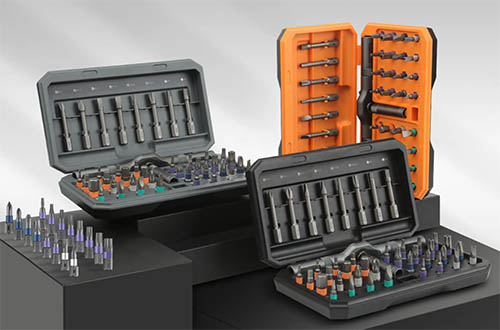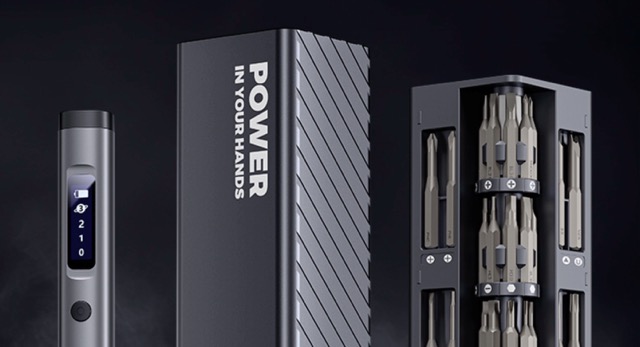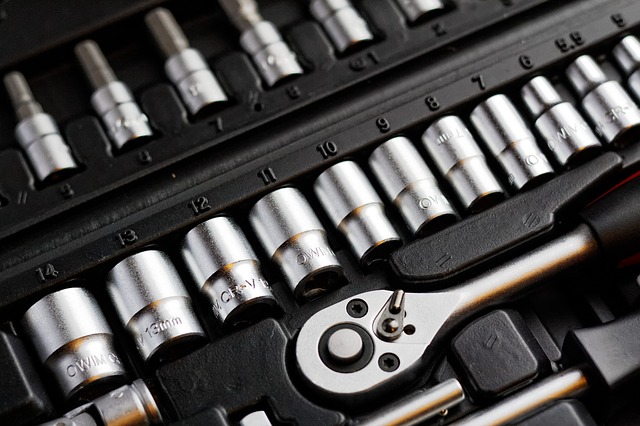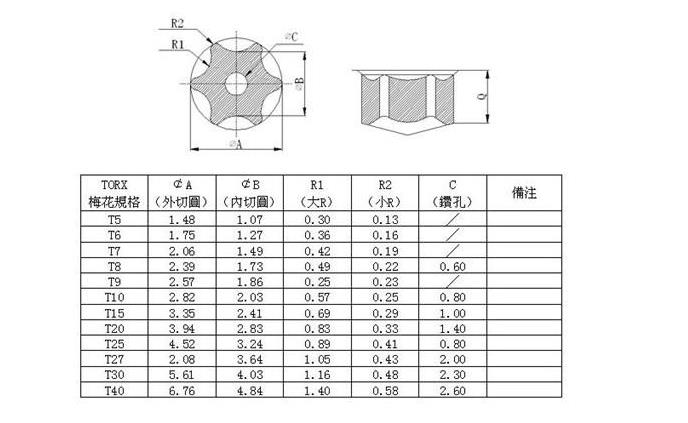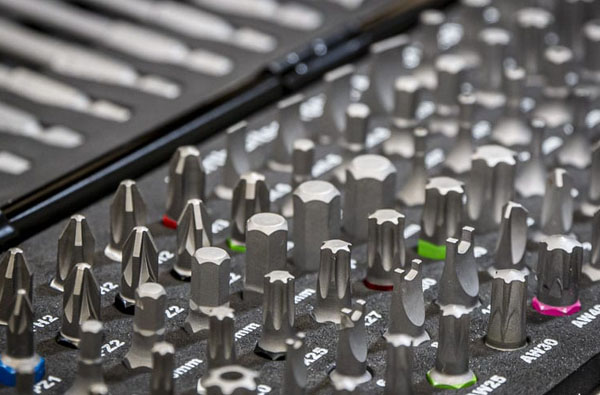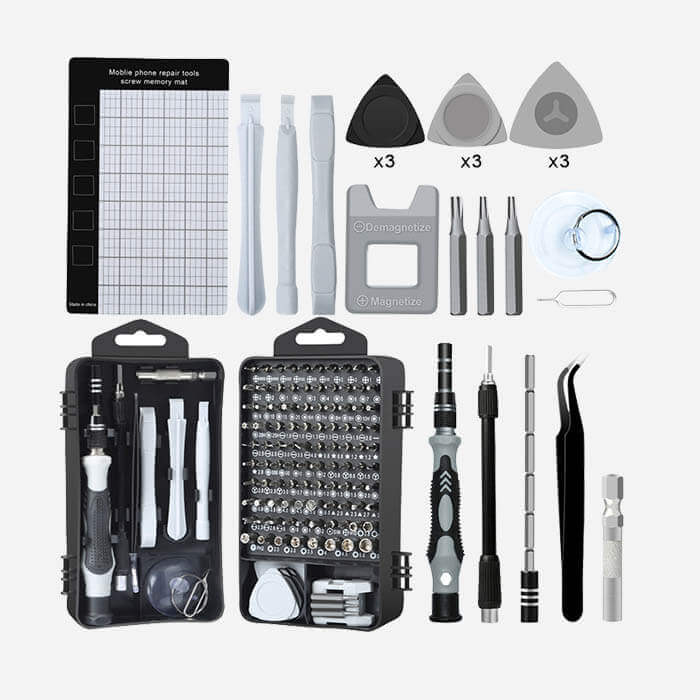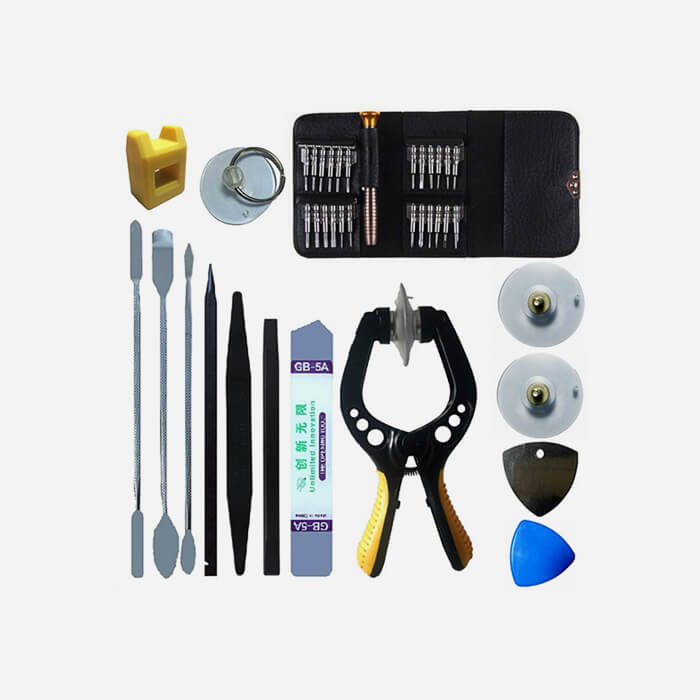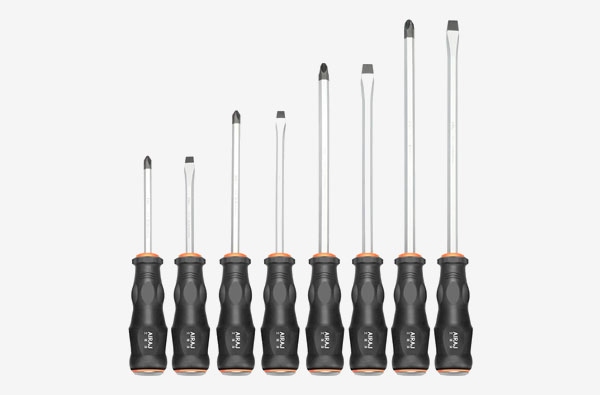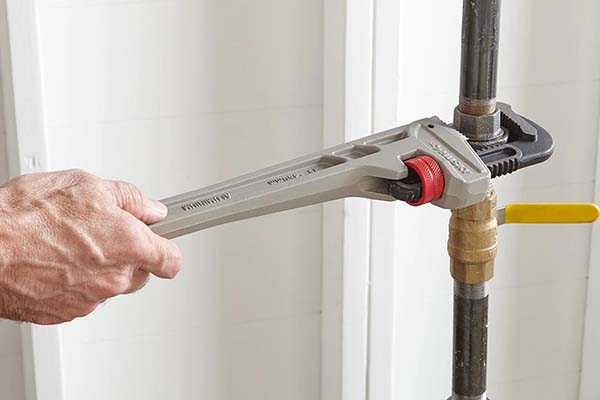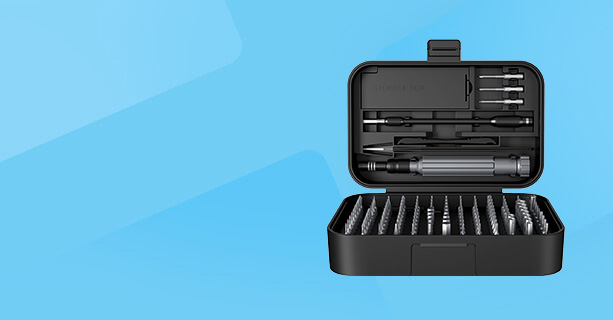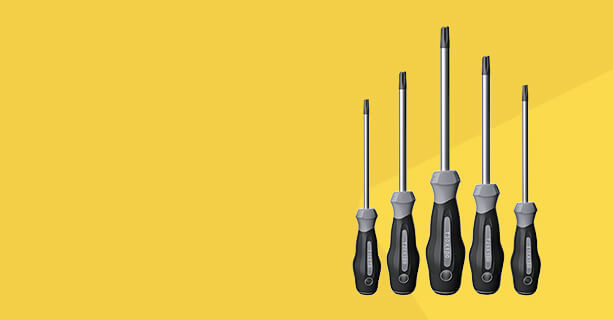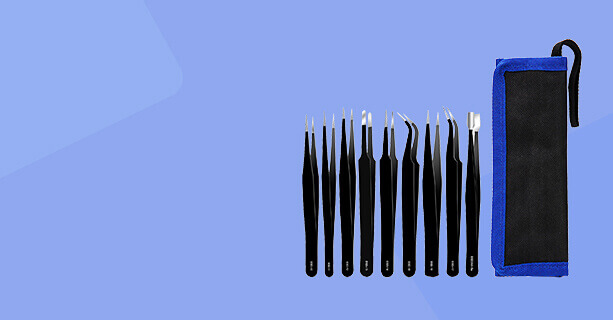The Most Complete Thread and Bolt Size Charts
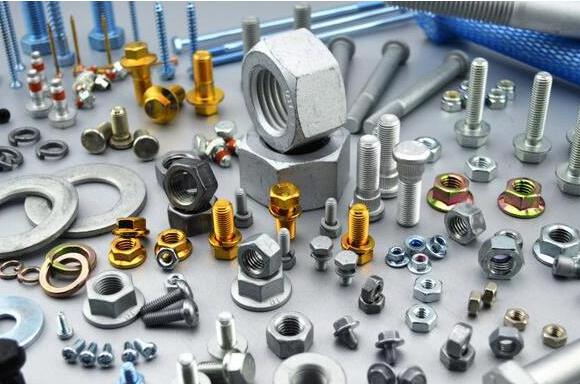
What are fasteners?
Fasteners are a type of mechanical parts that are used for fastening connections and are widely used. Fasteners are used in a wide range of industries, including energy, electronics, electrical appliances, machinery, chemicals, metallurgy, molds, hydraulic pressure and other industries, in various machinery, equipment, vehicles, ships, railways, bridges, buildings, structures, tools, instruments All kinds of fasteners can be seen on the chemical industry, instruments and supplies, etc., which are the most widely used mechanical basic parts. It is characterized by a wide variety of specifications, different performances and uses, and a high degree of standardization, serialization, and generalization. Therefore, some people also refer to a class of fasteners with existing national standards as standard fasteners, or simply as standard parts.
Before looking at the Bolt Size Chart, we will first try to learn about Bolts in general, some important identifications associated with Bolts, the method of measuring the Bolt’s Size, and many other things.
Common Types of Bolts
As Bolts and Nuts are of the commonly used fasteners, there are different types of bolts for different types of applications. Some of the more common and popular types of bolts are:
Hex Bolt
Lag Bolt
J-Bolt
U-Bolt
T-Bolt
Anchor Bolt
Sex Bolt
Carriage Bolt
Flange Bolt
Eye Bolt
Elevator Bolt
Plow Bolt
Hanger Bolt
Timber Bolt
Shoulder Bolt
Stud Bolt
Toggle Bolt
Bolt Dimensions
Before looking at the Bolt Size Chart, let us first try to understand different proportions and dimensions associated with a bolt. The following image shows a typical hex bolt with all the important dimensions marked on it.
A bolt can be divided into two parts: Bolt Head and Bolt Body
Bolt Head
The head of the bolt is usually hexagonal shape (sometimes square or circular) and is used to tighten or loosen the bolt. The size of the head is dependent on the shank’s nominal diameter.
Bolt head can have three important dimensions. They are:
Size across the Flats
Size across corners
Height of the Head
Bolt Body
The Bolt Body consists of the main shank with full or partial threads. Bolt Body can have important dimensions. They are:
Bolt Diameter
Body Length
Thread Length
Thread Pitch
The diameter of the Bolt is the actual size of the bolt and it is measured across the bolt shank or the threaded area. The body length of the bolt is measured from the tip of the bolt to the point where the shank meets the head. If the bolt is partially threaded, then the thread length can also be measured.
Thread Pitch is an important dimension associated with a Bolt. In imperial system, the thread pitch of the bolt is determined by the number of threads in one inch. In metric system, the distance between two adjacent threads in millimeters is considered as the Thread Pitch.
The thread pitch can be further categorized into coarse (or standard), fine, and super fine (or extra fine) threads. Coarse Threaded bolts have a lower thread count than the other types and are very common in general-purpose applications. For precision applications and situations where you require more holding force, fine-threaded bolts are used.
IMPORTANT NOTE: People often confuse between the size of the bolt and the size of the bolt head. When we say ‘size of the bolt’, it usually means the diameter of the bolt’s shank. The size of the bolt head is used to determine the size of the wrench to tighten or loosen the bolt.
Grade or Class
Another important specification associated with bolts is their grade (imperial) or class (metric), which determines the tensile strength of the bolt. The tensile strength of a bolt is the maximum stress/stretch it can handle before it breaks.
In USCS imperial system, the bolt’s tensile strength is represented using ‘grade marks’ on the top of the head. The ‘grade marks’ are nothing but radial lines and the more the number of lines on the head of the bolt, the greater the strength of the bolt.
In the metric system, the strength of the bolt is determined using its class number, which is also printed on the head of the bolt. The higher the class number, the greater is the strength of the bolt. If the number is followed by another number (for example, 10.9), then the second number represents the yield strength of the bolt, which determines the stress it can handle before it cannot return to its original shape without damage.
Consider a Class 10.9 Bolt. Here, this bolt has a tensile strength of 1,000MPa (145,000PSi) and a yield strength of 900MPa (130,000PSi).
Bolt Size Chart
Let us now see some bolt size charts. We will see both imperial and metric charts for bolt dimensions as well as the thread pitch.
Imperial Bolt Size Chart
Nominal Size | Bolt Diameter ‘D’ | Across Flats ‘A’ | Across Corners ‘B’ | Head Height ‘C’ | Thread Length ‘L’ | Transition Length ‘Y’ | |||||||
Max (in) | Min (in) | Nominal (in) | Max (in) | Min (in) | Max (in) | Min (in) | Nominal (in) | Max (in) | Min (in) | ≤6 in | >6 in | Max (in) | |
1/4 | 0.25 | 0.245 | 7/16 | 0.438 | 0.428 | 0.505 | 0.488 | 5/32 | 0.163 | 0.15 | 0.75 | 1 | 0.25 |
5/16 | 0.3125 | 0.3065 | 1/2 | 0.5 | 0.489 | 0.577 | 0.557 | 13/64 | 0.211 | 0.195 | 0.875 | 1.125 | 0.278 |
3/8 | 0.375 | 0.369 | 9/16 | 0.562 | 0.551 | 0.65 | 0.628 | 15/64 | 0.243 | 0.226 | 1 | 1.25 | 0.312 |
7/16 | 0.4375 | 0.4305 | 5/8 | 0.625 | 0.612 | 0.722 | 0.698 | 9/32 | 0.291 | 0.272 | 1.125 | 1.375 | 0.357 |
1/2 | 0.5 | 0.493 | 3/4 | 0.75 | 0.736 | 0.866 | 0.84 | 5/16 | 0.323 | 0.302 | 1.25 | 1.5 | 0.385 |
9/16 | 0.5625 | 0.5545 | 13/16 | 0.812 | 0.798 | 0.938 | 0.91 | 23/64 | 0.371 | 0.348 | 1.375 | 1.625 | 0.417 |
5/8 | 0.625 | 0.617 | 15/16 | 0.938 | 0.922 | 1.083 | 1.051 | 25/64 | 0.403 | 0.378 | 1.5 | 1.75 | 0.455 |
3/4 | 0.75 | 0.741 | 1-1/8 | 1.125 | 1.1 | 1.299 | 1.254 | 15/32 | 0.483 | 0.455 | 1.75 | 2 | 0.5 |
7/8 | 0.875 | 0.866 | 1-5/16 | 1.312 | 1.285 | 1.516 | 1.465 | 35/64 | 0.563 | 0.531 | 2 | 2.25 | 0.556 |
1 | 1 | 0.99 | 1-1/2 | 1.5 | 1.469 | 1.732 | 1.675 | 39/64 | 0.627 | 0.591 | 2.25 | 2.5 | 0.625 |
1-1/8 | 1.125 | 1.114 | 1-11/16 | 1.688 | 1.631 | 1.949 | 1.859 | 11/16 | 0.718 | 0.658 | 2.5 | 2.75 | 0.714 |
1-1/4 | 1.25 | 1.239 | 1-7/8 | 1.875 | 1.812 | 2.165 | 2.066 | 25/32 | 0.813 | 0.749 | 2.75 | 3 | 0.714 |
1-3/8 | 1.375 | 1.363 | 2-1/16 | 2.062 | 1.994 | 2.382 | 2.273 | 27/32 | 0.878 | 0.81 | 3 | 3.25 | 0.833 |
1-1/2 | 1.5 | 1.488 | 2-1/4 | 2.25 | 2.175 | 2.598 | 2.48 | 1-5/16 | 0.974 | 0.902 | 3.25 | 3.5 | 0.833 |
1-3/4 | 1.75 | 1.738 | 2-5/8 | 2.625 | 2.538 | 3.031 | 2.89 | 1-3/32 | 1.134 | 1.054 | 3.75 | 4 | 1 |
2 | 2 | 1.988 | 3 | 3 | 2.9 | 3.464 | 3.306 | 1-7/32 | 1.263 | 1.175 | 4.25 | 4.5 | 1.111 |
2-1/4 | 2.25 | 2.238 | 3-3/8 | 3.375 | 3.262 | 3.897 | 3.719 | 1-3/8 | 1.423 | 1.327 | 4.75 | 5 | 1.111 |
2-1/2 | 2.5 | 2.488 | 3-3/4 | 3.75 | 3.625 | 4.33 | 4.133 | 1-17/32 | 1.583 | 1.479 | 5.25 | 5.5 | 1.25 |
2-3/4 | 2.75 | 2.738 | 4-1/8 | 4.125 | 3.988 | 4.763 | 4.546 | 1-11/16 | 1.744 | 1.632 | 5.75 | 6 | 1.25 |
3 | 3 | 2.988 | 4-1/2 | 4.5 | 4.35 | 5.196 | 4.959 | 1-7/8 | 1.935 | 1.815 | 6.25 | 6.5 | 1.25 |
Thread Pitch
Bolt Size | Thread Pitch | |
(in) | Coarse | Fine |
1/4 | 20 | 28 |
5/16 | 18 | 24 |
3/8 | 16 | 24 |
7/16 | 14 | 20 |
1/2 | 13 | 20 |
9/16 | 12 | 18 |
5/8 | 11 | 18 |
3/4 | 10 | 16 |
7/8 | 9 | 14 |
1 | 8 | 14 |
1-1/8 | 7 | 12 |
1-1/4 | 7 | 12 |
1-3/8 | 6 | 12 |
1-1/2 | 6 | 12 |
1-3/4 | 5 | – |
2 | 4-1/2 | – |
2-1/2 | 4 | – |
3 | 4 | – |
Metric Bolt Size Chart
In metric system, the bolts (and nuts) are usually referred using the letter ‘M’ followed by additional dimensions. For example, a common metric specification of a bolt is “M6-1.0 x 20”. Here,
‘M’ indicates the bolt uses metric threads
‘6’ indicates the nominal diameter of the bolt (at the shank or the threads)
‘1.0’ indicates the thread pitch of the bolt in millimeters
‘20’ indicates the length of the bolt in millimeters
Size | Pitch | Across Flats ‘A’ | Across Corners ‘B’ | Head Height ‘C’ | Bolt Diameter ‘D’ | ||
(mm) | Max (mm) | Min (mm) | Min (mm) | Max (mm) | Max (mm) | Min (mm) | |
M5 | 0.8 | 8 | 7.78 | 9.2 | 3.5 | 5 | 4.82 |
M6 | 1 | 10 | 9.78 | 11.5 | 4 | 6 | 5.82 |
M8 | 1.25 | 13 | 12.73 | 15 | 5.3 | 8 | 7.78 |
M10 | 1.5 | 16 | 15.73 | 18.4 | 6.4 | 10 | 9.78 |
M12 | 1.75 | 18 | 17.73 | 20.7 | 7.5 | 12 | 11.73 |
M14 | 2 | 21 | 20.67 | 24.2 | 8.8 | 14 | 13.73 |
M16 | 2 | 24 | 23.67 | 27.7 | 10 | 16 | 15.73 |
M18 | 2.5 | 27 | 26.67 | 31.2 | 11.5 | 18 | 17.73 |
M20 | 2.5 | 30 | 29.67 | 34.6 | 12.5 | 20 | 19.67 |
M22 | 2.5 | 34 | 33.38 | 39.3 | 14 | 22 | 21.67 |
M24 | 3 | 36 | 35.38 | 41.6 | 15 | 24 | 23.67 |
M27 | 3 | 41 | 40.38 | 47.3 | 16.7 | 27 | 26.67 |
M30 | 3.5 | 46 | 45 | 53.1 | 18.7 | 30 | 29.67 |
M33 | 3.5 | 50 | 49 | 57.7 | 20.5 | 33 | 32.61 |
M36 | 4 | 55 | 53.8 | 63.5 | 22.5 | 36 | 35.61 |
Thread Pitch
Size | Coarse (mm) | Fine (mm) | Super Fine (mm) |
M2 | 0.4 | – | – |
M2.5 | 0.45 | – | – |
M3 | 0.5 | – | – |
M3.5 | 0.6 | – | – |
M4 | 0.7 | – | – |
M5 | 0.8 | – | – |
M6 | 1 | 0.75 | – |
M7 | 1 | – | – |
M8 | 1.25 | 1 | – |
M10 | 1.5 | 1.25 | 1 |
M12 | 1.75 | 1.5 | 1.25 |
M14 | 2 | 1.5 | – |
M16 | 2 | 1.5 | – |
M18 | 2.5 | 1.5 | – |
M20 | 2.5 | 1.5 | – |
M22 | 2.5 | 1.5 | – |
M24 | 3 | 2 | – |
M27 | 3 | 2 | – |
M30 | 3.5 | 2 | – |
M33 | 3.5 | 2 | – |
M36 | 4 | 3 | – |
M42 | 4.5 | 3 | – |
M48 | 5 | 3 | – |
M56 | 5.5 | 3 | – |
If you are looking for a professional screwdriver manufacturerto customize your precision screwdriver set, feel free to contact us today! We provide high-quality, customizable toolsfor various repair needs.


